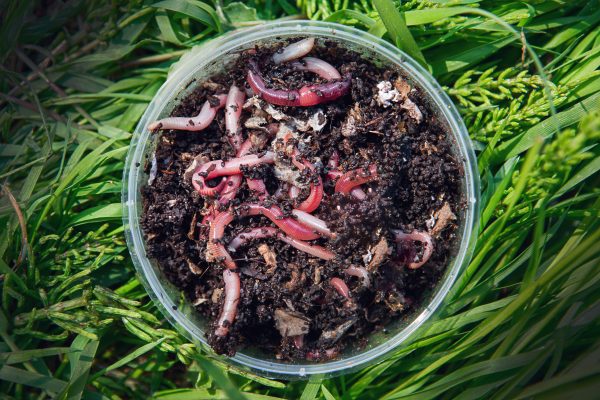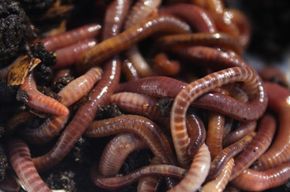Checking Out the Systems of Red Wiggler Composting: A Comprehensive Overview to the Refine and Its Positive Effect On Lasting Horticulture Practices
The complex systems of red wiggler composting, utilizing the unique physiology of Eisenia fetida, present a compelling opportunity for enhancing sustainable horticulture practices. This process not only transforms natural waste right into nutrient-dense vermicompost yet also fosters a much healthier soil environment through improved aeration and microbial activity. As city horticulture gains grip, understanding the nuances of this composting approach comes to be progressively appropriate. The trip right into its myriad benefits and finest practices is just starting, prompting a closer exam of exactly how this strategy can improve our gardening techniques.
Comprehending Red Wigglers
Red wigglers, medically referred to as Eisenia fetida, are a species of earthworm very pertained to for their efficiency in composting natural waste. These worms prosper in nutrient-rich environments, particularly in decaying natural matter, making them suitable for vermicomposting systems - Red Wiggler Composting. Defined by their reddish-brown pigmentation and fractional bodies, red wigglers are smaller sized than typical earthworms, usually measuring in between 3 to 4 inches in size
Their one-of-a-kind physiological traits enhance their composting abilities; as an example, they have a high reproductive rate, permitting populations to multiply swiftly under suitable problems. Red wigglers eat organic product, damaging it down through their gastrointestinal systems, which results in nutrient-rich spreadings that act as an excellent natural plant food. Their ravenous appetite enables them to process large quantities of food waste effectively, considerably decreasing garbage dump payments.
In addition to their composting prowess, red wigglers play an important role in soil health. Red Wiggler Composting. They aerate the soil and assist in the disintegration of raw material, more improving the dirt ecosystem. Comprehending the attributes and ecological advantages of red wigglers is important for anyone looking to implement lasting gardening techniques with efficient composting methods
The Composting Process
The composting procedure involves damaging down natural materials right into nutrient-rich garden compost, a job that red wigglers excel at because of their specialized digestion systems. These worms eat food scraps, yard waste, and various other raw material, changing them into valuable compost with a series of chemical and biological procedures.
Initially, the natural issue is mixed with bed linen products such as shredded paper or dried leaves, creating an optimum environment for the worms. As the red wigglers ingest this combination, they simplify through their digestive tract, where bacteria even more disintegrate the material. This procedure produces warmth, advertising microbial task, which accelerates disintegration.

Benefits of Red Wiggler Composting
Eco-conscious people and numerous garden enthusiasts identify the many advantages of red wiggler composting, making it a prominent option for reliable waste monitoring. One of the main benefits is its ability to dramatically minimize natural waste in garbage dumps - Red Wiggler Composting. Red wigglers effectively damage down kitchen scraps and other naturally degradable products, changing them into nutrient-rich vermicompost that enriches dirt wellness
Additionally, red wiggler composting boosts dirt structure and fertility. The resulting vermicompost is teeming with valuable microorganisms, which promote plant growth and improve nutrient retention. This all-natural fertilizer not just supports sustainable gardening techniques however additionally lowers reliance on chemical fertilizers, promoting a much healthier ecological community.
Additionally, red wiggler composting is a space-efficient technique, making it optimal for urban gardeners with restricted area. The process can be conducted inside or outdoors, allowing for year-round composting despite environment conditions. Moreover, red wigglers are low-maintenance microorganisms that need very little treatment, making them easily accessible for amateur garden enthusiasts.
In essence, the advantages of red wiggler composting extend past waste decrease; they add to healthier dirts, lasting horticulture techniques, and ecological stewardship, placing it as an important practice in modern-day gardening.
Ideal Practices for Composting
For effective red wiggler composting, adhering to finest methods is important to make best use of performance and ensure an effective setting for these worms. This equilibrium advertises optimal decomposition and improves the worms' health.
Next, monitor dampness levels, aiming for a moist, sponge-like consistency. Overly damp conditions can lead to anaerobic decomposition, while extreme dryness may prevent worm activity. Furthermore, make certain appropriate oygenation by turning the garden compost consistently, which assists protect against compaction and enables ample oxygen circulation.
Temperature is one more critical element. Keep a variety of 55 ° F to 77 ° F(13 ° C to 25 ° C) to promote image source worm activity and microbial growth. Finally, prevent presenting meat, milk, and oily foods, as these can draw in pests and develop smells.
Enhancing Lasting Gardening
Sustainable gardening embodies a holistic approach that harmonizes environmental principles with sensible horticulture techniques. By incorporating methods such as red wiggler composting, gardeners can substantially boost their practices, cultivating a much more resistant ecosystem. Red wigglers, renowned for their effective disintegration abilities, transform natural waste into nutrient-rich garden compost, therefore enriching the soil without relying upon chemical fertilizers.
Applying lasting horticulture methods, such as crop rotation, friend growing, and mulching, important link further complements the advantages of composting. These methods not only improve dirt structure and fertility yet additionally promote biodiversity, attracting helpful insects and organisms that add to plant wellness. In addition, using native plants can lower water usage and minimize upkeep, lining up with water conservation efforts.

Verdict
To conclude, red wiggler composting stands for a vital approach for improving sustainable gardening practices. The reliable digestion of organic waste by Eisenia fetida not only generates nutrient-rich vermicompost yet likewise cultivates improved soil health and structure. By advertising cardio disintegration, this strategy reduces smells and waste while lowering reliance on chemical plant foods. Inevitably, the adoption of red wiggler composting can considerably add to green gardening, profiting both urban and novice garden enthusiasts in their farming efforts.
The intricate devices of red wiggler Click Here composting, making use of the distinct physiology of Eisenia fetida, provide an engaging avenue for boosting lasting horticulture practices. Comprehending the attributes and ecological advantages of red wigglers is crucial for anybody looking to execute lasting horticulture practices through reliable composting techniques.

In conclusion, red wiggler composting represents an important technique for enhancing sustainable gardening practices. Eventually, the adoption of red wiggler composting can considerably contribute to eco-friendly gardening, profiting both urban and amateur garden enthusiasts in their farming initiatives.